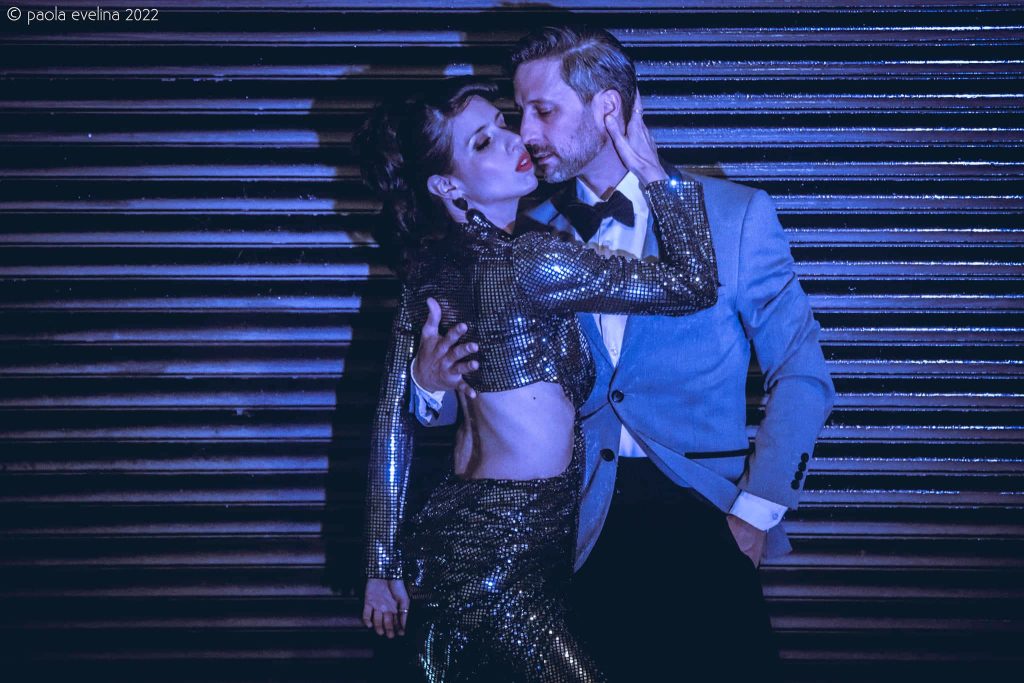
When did you start to dance tango, where and why?
D – I started dancing tango when I was 19 years old. My father opened a milonga, “Negracha Club del Tango” in the year 1994, at the mythic San Telmo neighborhood. I work there and started dancing in my free time. There I discovered the mysteries of tango and fell deeply in love with it.
Who were your first teachers, and then the most important inspiration/ influences.
D – My first and most important teachers were Nestor Ray, Nito y Elba, El Turco Josè among many anonymous milongueros, and later on Gustavo Naveira fully opened my mind. Also Jorge Bartolucci when I was living in Mèxico.
Did you attend a special scene – group of people. Located where in BA?
D – I had the privilege of witness the tango scene in the 90s and later on in the 2000 I got deep into the underground Tango culture.
What neighborhood did you grow up in? Was tango a part of your culture in childhood?
D – Since my mother was Brazilian and my father Argentinian and I was born in Mexico City, and later on I came back to Argentina, I would say that I belong to many different neighborhoods, many cities and many countries . But my father and grandfather neighborhood was La paternal. My grandfather used to listen to Tango all the time.
What has been your main interest in tango?
D – One of the things that interested me the most was the possibility of establishing a very deep connection with an absolute stranger. It seems to me that Tango is one of the most complex dances ever. And I am not talking about the complexity of the choreography but better yet Tango as a metaphor of human relations.
What is your main interest in tango now?
D – My interest hasn’t changed: Tango is an endless exploration of the human soul through the game of dancing.
Why is tango so popular?
D – I should say the tango is not that popular in Argentina and that’s a paradox yet to be solved. Nevertheless tango is very important all around the world and I think it is very popular because of this mechanisms that allows you to connect with someone even if you don’t speak the same language or even if you belong to different cultures.
What do you think of the future of tango worldwide?
D – I think Tango communities have the potentiality of growing up a lot. But from the year 2000 and then this growing as stopped. It is time to leave on the side ego and narcissism. If we manage to do that I think tango has a brilliant future worldwide.
Is there a difference between tango in Buenos Aires and Europe? Or other places?Have you met tango in other places in the world that impressed you for a reason?
D – Tango is different everywhere it flourish. Everywhere you go you can find local characteristics very related with culture and idiosyncrasies.
Is tango an Argentine expression or is it an urban global expression?
D – Tango as a music and as a dance, as a cultural phenomenon , was born in Argentina, in Buenos Aires specifically, and it is an urban expression. That is why it develops so easily in urban contexts all around the globe. In modern life although we have a lot of channels of communication is very hard really to connect with someone and this is something you can easily see in the cities.
What do you love about tango?
D – What I love about Tango is that at the end it is still remains a mystery.
What is your favourite tango (tema)?
D – Impossible to choose just one. And that is something else that I love about tango: variety!
Who are your biggest inspirations also outside of tango.
D – Mikhail Baryshnikov and José Limon, but also Sidi Larbi. But I also find a lot of inspiration in artist of other disciplines not just dancing.